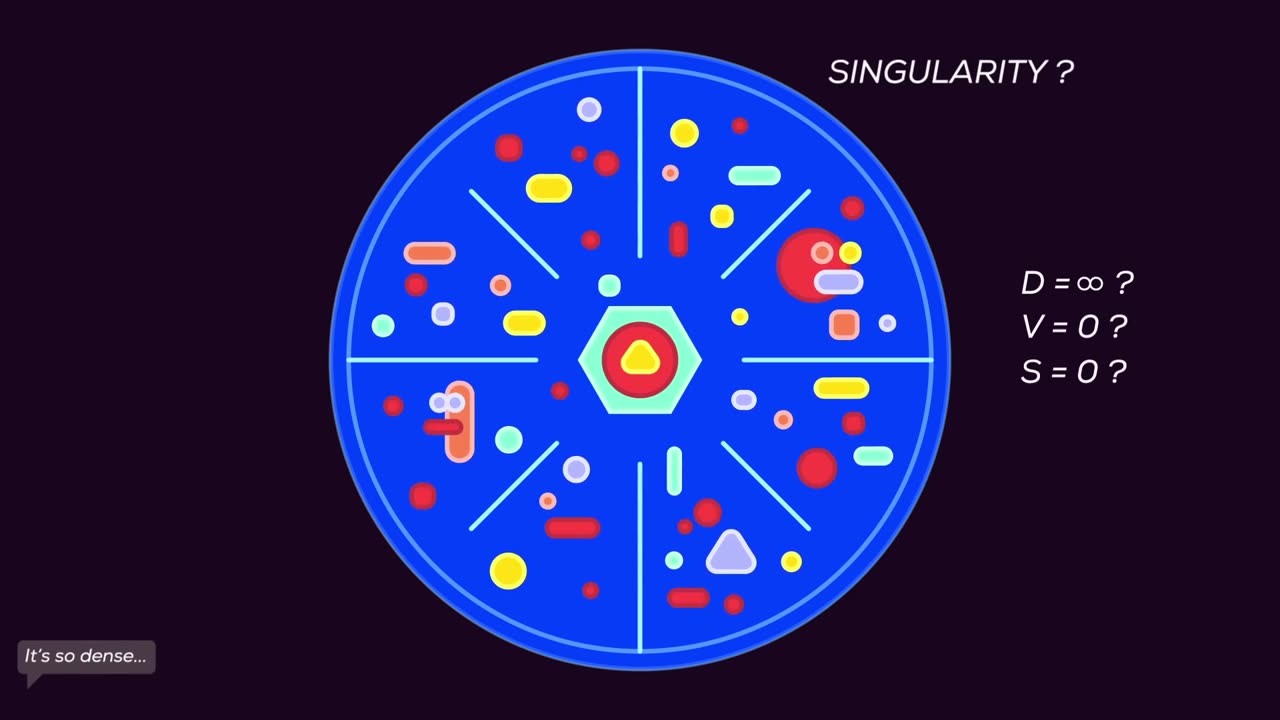Premium Only Content

Black Holes Explained – From Birth to Death
Absolutely, let's talk about black holes! Black holes are fascinating and mysterious cosmic objects that have captured the imagination of scientists and the public alike. They are formed from the remnants of massive stars that have undergone gravitational collapse. Here's a basic overview of some key aspects of black holes:
Formation: When a massive star exhausts its nuclear fuel, its core collapses under the force of gravity. If the core's mass exceeds a critical value (approximately 3-4 times that of our Sun), it collapses completely, forming a black hole.
Singularity: At the center of a black hole lies a point known as a singularity. This is a region where the gravitational pull becomes infinitely strong and spacetime itself is highly curved. Our current understanding of physics breaks down in such extreme conditions, and this is one of the reasons black holes are so intriguing.
Event Horizon: The event horizon is the boundary beyond which nothing, not even light, can escape the gravitational pull of a black hole. This is often referred to as the "point of no return."
Types of Black Holes:
Stellar-mass Black Holes: These are formed from the remnants of massive stars and typically have masses ranging from a few to around 100 times that of the Sun.
Intermediate-mass Black Holes: These have masses between stellar-mass and supermassive black holes. Their formation process is not yet fully understood.
Supermassive Black Holes: These exist at the centers of galaxies and have masses ranging from millions to billions of times that of the Sun. Their origin is still a topic of research and debate.
Observation and Detection: Black holes themselves are not directly visible because they do not emit light. However, their presence can be inferred through their gravitational effects on nearby objects, such as stars orbiting them. Also, material spiraling into a black hole can emit X-rays and other forms of radiation.
Hawking Radiation: Proposed by physicist Stephen Hawking, this theoretical concept suggests that black holes can emit a type of radiation due to quantum effects near the event horizon. Over an extremely long time, this radiation could cause a black hole to lose mass and eventually evaporate.
Black Hole Mergers: When two black holes are in close orbit around each other, they can eventually merge, emitting gravitational waves in the process. These waves were first detected in 2015, confirming a prediction made by Einstein's general theory of relativity.
Black holes continue to be a subject of intense study and research, as they hold key insights into the fundamental nature of spacetime, gravity, and the universe itself. If you have specific questions or aspects of black holes you'd like to know more about, feel free to ask!
-
 1:11:33
1:11:33
Wendy Bell Radio
8 hours agoWeekends With Wendy
50.8K171 -
 1:35:07
1:35:07
Man in America
1 day agoPeptides: Ultimate Health Hack… or Big Pharma Gila Monster POISON? w/ Dr. Diane Kazer
167K90 -
![The Legend of Zelda: Oracle of Seasons | Part 3 [Finale]](https://1a-1791.com/video/fww1/d1/s8/1/F/H/N/B/FHNBy.0kob-small-The-Legend-of-Zelda-Oracle-.jpg) LIVE
LIVE
JdaDelete
3 hours ago $1.80 earnedThe Legend of Zelda: Oracle of Seasons | Part 3 [Finale]
159 watching -
 LIVE
LIVE
MrR4ger
17 hours agoNEW ERA FOR DaD?? - DARK and DARKER HELLDIVERS 2 w/ @M3thods AFTER
174 watching -
 32:55
32:55
The Connect: With Johnny Mitchell
1 day ago $7.53 earnedInside America's LARGEST Pot Trafficking Gang: How Florida Fishermen Became #1 Most Wanted Cartel
76.3K16 -
 6:39:57
6:39:57
Biscotti-B23
8 hours ago $2.75 earned🔴 LIVE EARLY ACCESS RANKED GRIND ⚽ THE BEST FOOTBALL GAME OUT 💥 REMATCH
38.1K2 -
 8:00:02
8:00:02
SpartakusLIVE
23 hours agoFIRST Pick of the Fourth Round for the $100,000 Tournament
113K3 -
 16:18
16:18
Mrgunsngear
16 hours ago $25.20 earnedBlack Aces Tactical S4 Tactical - Benelli M4 Clone But Does It Work?
144K16 -
 2:05:15
2:05:15
Right Side Broadcasting Network
17 hours agoLIVE REPLAY: President Trump Attends UFC Fight 314 - 4/12/25
173K16 -
 2:07:42
2:07:42
BlackDiamondGunsandGear
16 hours agoWho’s in Town for This Stream?
100K5